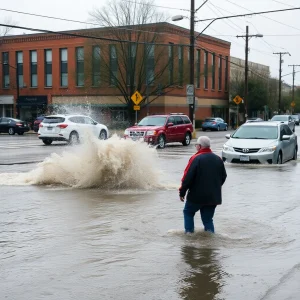A Swamped Wilmington Tries to Dry Out as the Tropics Stay Busy
Wilmington Overwhelmed by Rainfall
Wilmington is grappling with the aftermath of Tropical Storm Debby, which has drenched the area with almost 11 inches of rain at Wilmington International Airport alone over the past week. Normally, the city expects just over 8 inches of rain throughout August. The Cape Fear region has seen even more, with some areas reporting over 15 inches due to Debby’s relentless downpours.
Ongoing Flooding Concerns
As of now, much of Southeastern North Carolina remains waterlogged, with overflowing waterways and ongoing street closures due to flooding. Rivers continue to rise as water from inland areas flows toward the coast, raising concerns that flooding and standing water will linger across the region for days. Unfortunately, the forecast hints at the possibility of more rain next week.
Storm Activity Building in the Tropics
What’s keeping emergency officials on alert are the tropical waves currently moving across the Atlantic Ocean. The National Hurricane Center has identified one wave with a 70% chance of developing into a tropical depression by Tuesday, which could evolve into Tropical Storm Ernesto by week’s end.
Potential Impacts of Ernesto
While many models predict that the system will curve away from the U.S. coast as it approaches the Bahamas, forecasters caution that if it gains strength, it could unleash heavy rains and strong winds on areas still recovering from Debby’s flooding. Emergency responders are particularly anxious about potential tree falls, given the saturated ground conditions.
Historical Worries Resurface
For long-time residents, the thought of a twin storm threat brings back memories of 1999 when Hurricane Dennis soaked Wilmington mere weeks before Hurricane Floyd struck, causing devastating floods across Eastern North Carolina.
Increased Storm Predictions for the Season
According to NOAA’s Climate Prediction Center, the 2023 hurricane season is expected to bring 17 to 24 named storms, with 8 to 13 likely becoming hurricanes, including 4 to 7 major hurricanes (Category 3 or stronger). The ongoing tropical activity is attributed to several factors: warmer sea surface temperatures, reduced wind shear, and less dry air from the Saharan Desert, leading to favorable conditions for storm development.
Lingering Effects of Debby
As North Carolina officials monitor the tropical developments, they continue to warn residents about the lasting impacts from Debby. Swollen rivers and streams pose a threat that can quickly inundate roads and neighborhoods with little warning. In Brunswick County, many roads remain compromised, with some entrances and rural routes still affected by flooding. In New Hanover County, Market Street near the Porters Neck Walmart is closed, and a flood watch remains in place for Pender County.
Heat and Rip Current Warnings
Adding to the troubles, the National Weather Service has issued a “moderate” risk of rip currents for local beaches and is forecasting dangerously high temperatures that could reach triple digits this weekend. Residents are urged to remain vigilant as recovery efforts from Debby’s impacts continue alongside the unpredictability of the approaching tropical weather.




























